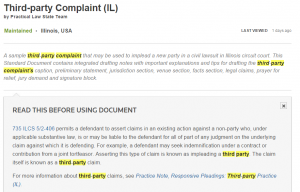It’s the second week of class. You’ve met your professors, classmates, and the syllabus. You might be starting in a clinic or continuing with a part-time (or full-time) job. No matter what these two weeks have introduced you to, there’s probably one thing that would help you with nearly all of it, and that’s a form.
We are all familiar with forms from going to the DMV or requesting a transcript, but legal forms are something different. They are sample work product that you can adapt to fit your client’s situation. They might be a literal fill-in-the-blank or they might be an example of a completed document. What they are most certainly not are a paint-by-numbers easy fix to legal problems. A form is only as well-informed and effective as the attorney using it. No matter what, a form is better than starting from nothing and facing a blinking cursor.
What are some sources to find forms? All of the big three legal research databases have made a strong effort to introduce more forms: Practical Law on Westlaw, Practice Advisor on Lexis, and DealMaker on Bloomberg. Many of these forms offer not only sample work product for you to use, but guidance on the law behind the forms as well. You’ll see a little pop up or an expandable note that explains how to use the form and how to update the law. See the screenshot from Westlaw’s Practical Law, below.
This note includes link to the applicable law, as well as a link to an entire article (“Practice Note”) just about third party practice.
If you’re working in Illinois, the most important source to know is the IICLE Smartbooks. The IICLEs, in addition to being a valuable resource about Illinois law, include forms written for Illinois practice. You can access the IICLE Smartbooks through the library’s website.
You may also find forms in the statutes, such as the Supreme Court’s approved interrogatories in Illinois Supreme Court Rule 213, or court websites.
There are many more sources of legal forms. For more information or to see if there’s a form resource specific to the area of law you’re working with, check out the library’s Guide to Finding Legal Forms.
Thank you and have a [happy/safe/productive] semester!


